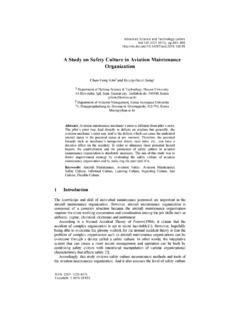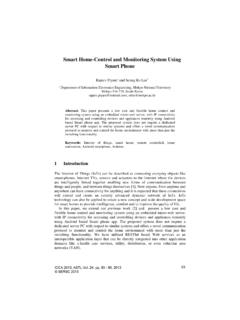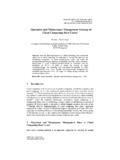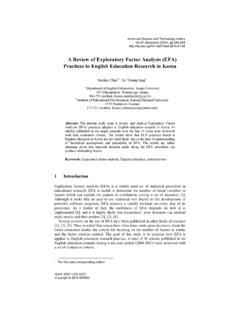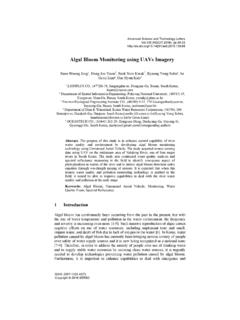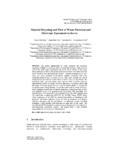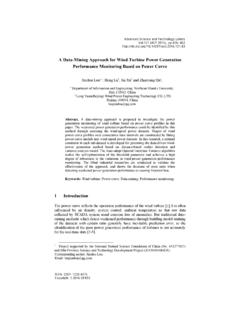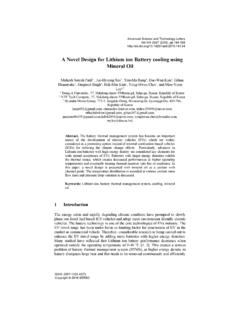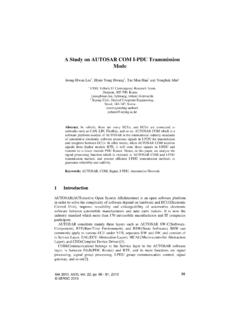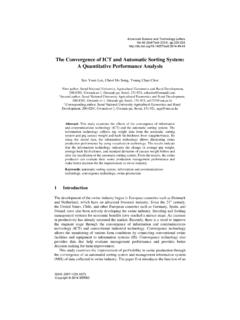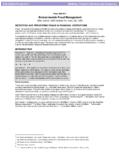Transcription of Dealing with Sinkhole Attacks in Wireless Sensor …
1 Dealing with Sinkhole Attacks in Wireless Sensor Networks Junaid Ahsenali Chaudhry1, Usman Tariq2, Mohammed Arif Amin3, Robert G. Rittenhouse4 1 Center for Advanced Image and Information Technology, School of Electronics & Information Engineering, ChonBuk National University, Jeonju, Korea. 2 College of Computer Engineering & Sciences Salman Bin Abdulaziz University, 151 Alkharj 11942 Kingdom of Saudi Arabia. 3 Department of Computer and Information Science (HCT), Abu Dhabi, United Arab Emirates.
2 4 Keimyung Adams College, Keimyung University Daegu, 704-701, South Korea, (corresponding author) Abstract. Wireless Sensor networks (WSNs) consist of many small Wireless Sensor nodes which are capable of sensing data and sending it to base stations. WSNs face resource constraints including limitations on communication, power, memory capacity and computational power. Also, since they are frequently deployed in hostile environments and left unattended, they are vulnerable to several Attacks such as Sinkhole Attacks .
3 Sinkhole Attacks occur when a compromised node attracts network traffic by advertising fake routing updates. This paper first describes the challenges in detecting Sinkhole Attacks in WSNs. This is followed by analyzing methods to detect and neutralize sinkholes. Keywords: Intrusion detection, Sinkhole attack, Wireless Sensor networks. 1 Introduction Wireless Sensor networks (WSNs) consist of small nodes able to sense and send data to base stations via a mesh network [1].
4 Applications include deployment by the military to Advanced Science and Technology Letters (SecTech 2013), ISSN: 2287-1233 ASTL Copyright 2013 SERSC track enemy movement, environmental monitoring such as fire detection and health services such as cardiac monitoring [2 4]. Unfortunately many WSNs are deployed in unfriendly areas and are often left unattended. In addition most routing protocols used in WSNs do not consider security aspects due to resource constraints including low computational power, limited memory, small power supplies and limited communication range [5, 6].
5 This creates opportunities for attackers. Sinkhole Attacks are a typical such attack. Different methods have been proposed to detect and counter Sinkhole Attacks . This paper surveys and reviews these solutions. 2 Sinkhole Attacks In a s inkhole attack an intruder compromises a node or introduces a counterfeit node inside the network and uses it to launch an attack. The compromised node tries t o attract all the traffic from neighbor nodes based on the routing metric used in the routing protocol.
6 When the compromised node manages to achieve that, it will launch an attack. Sinkhole Attacks are a type of network layer attack where the compromised node sends fake routing information to its neighbors to attract network traffic to itself [7]. Due to the ad hoc network and many to one communication pattern of Wireless Sensor networks where many nodes send data to a single base station, WSNs are particularly vulnerable to Sinkhole Attacks [8]. Based on the communication flow in the WSN the Sinkhole does not need to target all the nodes in the network but only those close to the base station.
7 We consider two scenarios of Sinkhole Attacks . In the first the intruder has more power than other nodes. In the second the intruder and other nodes have the same power. In both cases the intruder claims to have the shortest path to base station so that it can attract network traffic. In a Wireless Sensor network the best path to the base station is the basic metric for routing data Fig. 1. Two illustrations of Sinkhole attack in WSN a) using artificial high quality route b) using worm hole [8] Advanced Science and Technology Letters (SecTech 2013) 8 Copyright 2013 SERSCIn Figure 1(a); the intruder has greater computational and communication power than other nodes and has managed to create a high quality single hop connection with the base station.
8 It then advertises its high quality routing message to its neighbors. After that all the neighbors will divert their traffic to the base station to pass through the intruder and the Sinkhole attack is launched. In Figure 1(b) the Sinkhole attack is launched in conjunction with a wormhole attack. This attack involves two compromised nodes linked via a tunnel or wormhole [6]. 3 Related Work Due to resource constraints traditional security mechanisms are not efficient for a WSN. Different researchers have proposed different solutions to detect and identify Sinkhole Attacks in Wireless Sensor networks.
9 This section discusses these solutions. Existing Approaches We have identified the following approaches by different researchers to detect and identified Sinkhole attack in Wireless Sensor network. Approaches taken by previous researchers may be classified into anomaly based, rule based, statistical methods cryptographic key management, and hybrid systems. Anomaly-based: in anomaly based detection normal user behavior is defined and the intrusion detection strategy is to search for anything that appears anomalous in the network.
10 Rule based and statistical approaches are a subset of anomaly based detection approaches [9]. Rule based: In the rule based approach rules are designed based on the behavior or technique used to launch Sinkhole Attacks . These rules are implanted in intrusion detection system running on each Sensor node or on specialized monitors [10]. Any node will be considered an adversary and isolated from the network if it violates the rules. Statistical: In statistical approaches data associated with certain activities of the nodes in network is recorded.
